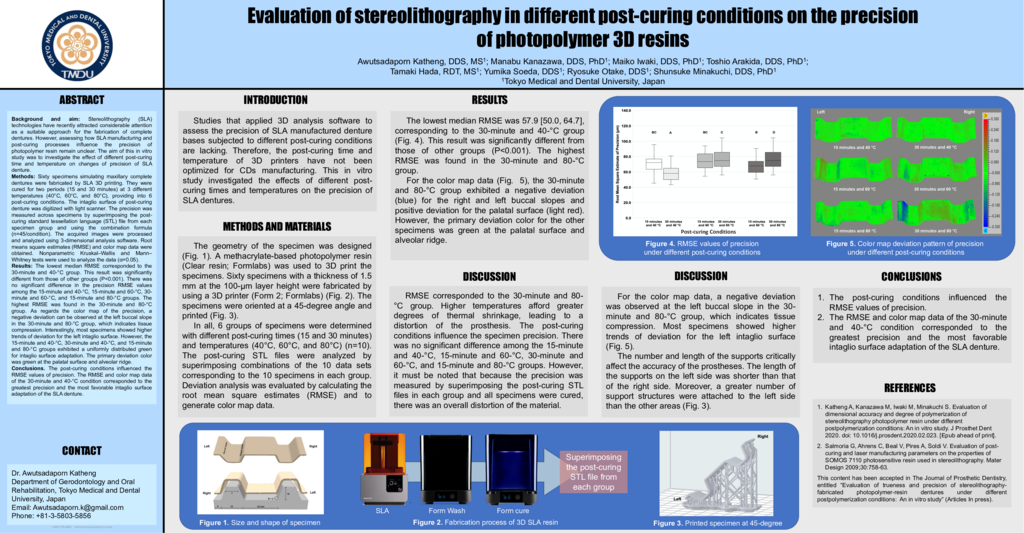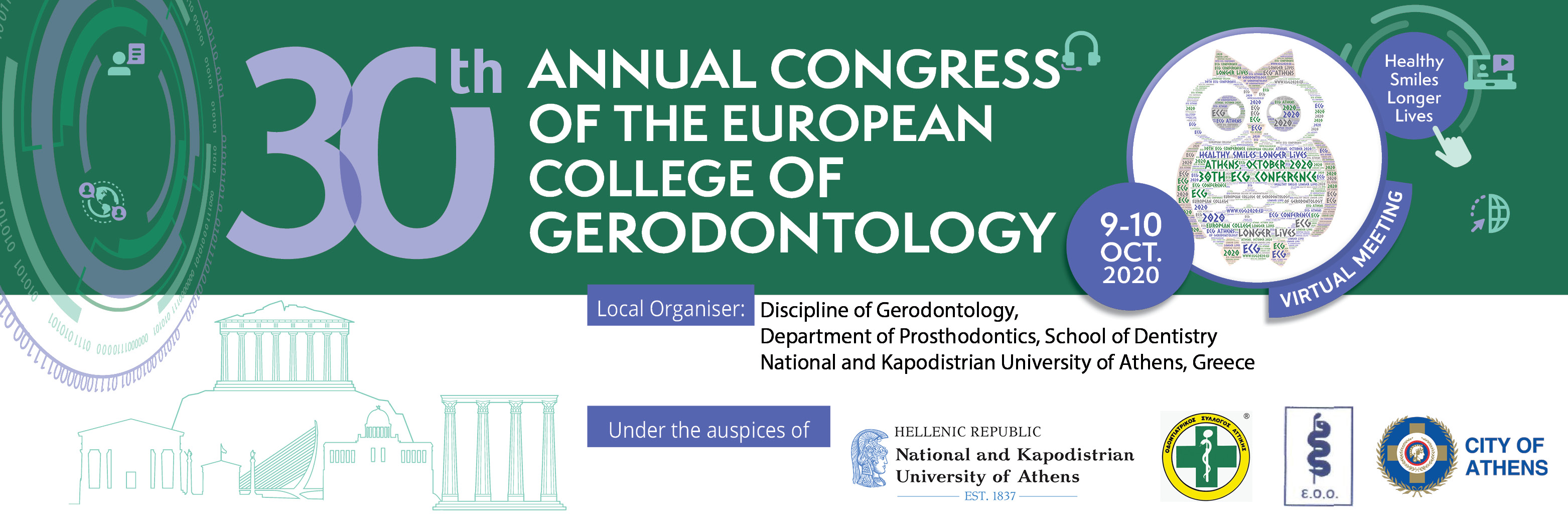Background and aim: Stereolithography (SLA) technologies have recently attracted considerable attention as a suitable approach for the fabrication of complete dentures. However, assessing how SLA manufacturing and post-curing processes influence the precision of photopolymer resin remain unclear. The aim of this in vitro study was to investigate the effect of different post-curing time and temperature on changes of precision of SLA denture. Methods: Sixty specimens simulating maxillary complete dentures were fabricated by SLA 3D printing. They were cured for two periods (15 and 30 minutes) at 3 different temperatures (40°C, 60°C, and 80°C), providing into 6 post-curing conditions. The intaglio surface of post-curing denture was digitized with light scanner. The precision was measured across specimens by superimposing the post-curing standard tessellation language (STL) file from each specimen group and using the combination formula (n=45/condition). The acquired images were processed and analyzed using 3-dimensional analysis software. Root means square estimates (RMSE) and color map data were obtained. Nonparametric Kruskal–Wallis and Mann–Whitney tests were used to analyze the data (α=0.05). Results: The lowest median RMSE corresponded to the 30-minute and 40-°C group. This result was significantly different from those of other groups (P<0.001). There was no significant difference in the precision RMSE values among the 15-minute and 40-°C, 15-minute and 60-°C, 30-minute and 60-°C, and 15-minute and 80-°C groups. The highest RMSE was found in the 30-minute and 80-°C group. As regards the color map of the precision, a negative deviation can be observed at the left buccal slope in the 30-minute and 80-°C group, which indicates tissue compression. Interestingly, most specimens showed higher trends of deviation for the left intaglio surface. However, the 15-minute and 40-°C, 30-minute and 40-°C, and 15-minute and 80-°C groups exhibited a uniformly distributed green for intaglio surface adaptation. The primary deviation color was green at the palatal surface and alveolar ridge. Conclusions: The post-curing conditions influenced the RMSE values of precision. The RMSE and color map data of the 30-minute and 40-°C condition corresponded to the greatest precision and the most favorable intaglio surface adaptation of the SLA denture.
- 29 views



